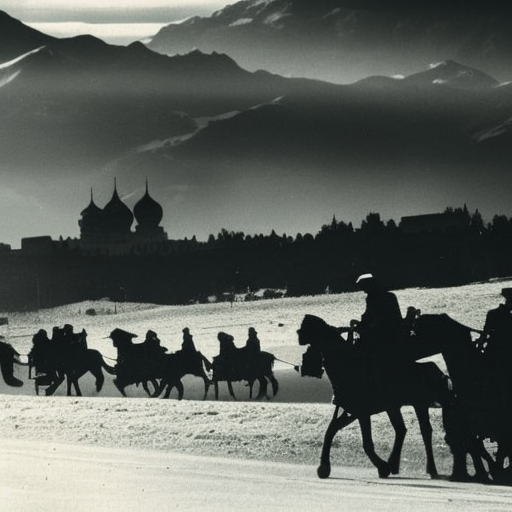Summary:
Marco Polo’s travels were a series of journeys undertaken by the Venetian explorer Marco Polo in the 13th century. His travels took him across Asia, including China, and his detailed accounts of his experiences became one of the most important travelogues in history. Polo’s travels not only provided valuable information about the lands he visited but also played a crucial role in promoting trade and cultural exchange between Europe and Asia.
Background:
Marco Polo was born in Venice, Italy, in 1254. At the age of 17, he embarked on a journey with his father and uncle, who were already experienced merchants. Their goal was to reach the court of Kublai Khan, the Mongol emperor of China. The Polos traveled along the Silk Road, a network of trade routes that connected Europe and Asia.
Travels in Asia:
After a long and arduous journey, the Polos arrived in China in 1275 and were welcomed by Kublai Khan. Marco Polo served as an official in the Khan’s court for 17 years, during which he traveled extensively throughout the empire. He visited major cities such as Beijing, Hangzhou, and Xanadu, and explored regions that were previously unknown to Europeans.
Trade and Commerce:
Polo’s accounts of the wealth and splendor of the Mongol Empire, as well as the abundance of valuable goods in China, sparked great interest in Europe. His descriptions of the Silk Road and the potential for lucrative trade with the East motivated European merchants to seek new routes to Asia. This eventually led to the Age of Exploration and the discovery of new sea routes, such as the one taken by Christopher Columbus.
The Travels of Marco Polo:
During his time in China, Marco Polo kept detailed notes about his experiences, which he later compiled into a book called “The Travels of Marco Polo.” The book provided Europeans with their first comprehensive account of the lands and peoples of Asia. Polo’s descriptions of the Chinese culture, customs, and technologies, such as paper money and coal, were particularly influential.
Legacy:
“The Travels of Marco Polo” became one of the most widely read books in Europe during the Middle Ages. It sparked curiosity about the world beyond Europe and inspired future explorers, including Christopher Columbus and Vasco da Gama. Polo’s travels also had a lasting impact on trade and cultural exchange between Europe and Asia. The demand for Asian goods, such as spices, silk, and porcelain, increased, leading to the establishment of new trade routes and the growth of European economies.
Controversy:
While Marco Polo’s accounts were widely celebrated, some scholars have questioned the accuracy of his descriptions. They argue that Polo may have embellished or exaggerated certain aspects of his travels. However, recent research and archaeological discoveries have provided evidence supporting many of Polo’s claims, reaffirming the historical significance of his journey.
Conclusion:
Marco Polo’s travels were a remarkable feat of exploration and documentation. His detailed accounts of the lands and peoples of Asia provided Europeans with valuable knowledge and inspired future generations of explorers. Polo’s travels not only expanded European understanding of the world but also played a crucial role in promoting trade and cultural exchange between Europe and Asia.












